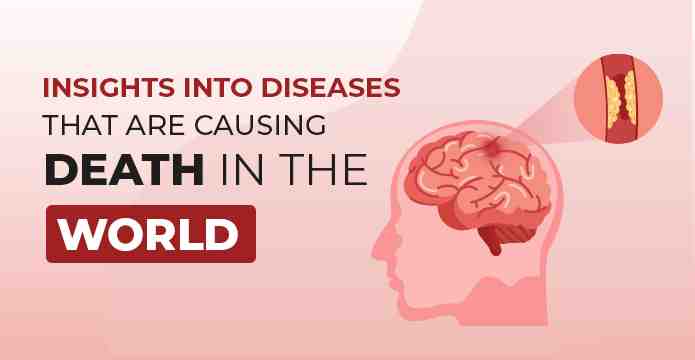Human beings are not mortal. Aging is an inevitable process so are some of the diseases that come as one age and also some diseases are there which are communicable. According to the World Health Organization (WHO), two non-communicable diseases like Ischaemic heart disease (IHD) and stroke are the world’s biggest killers together causing nearly 15.2 million deaths in the year 2016 alone. These two diseases have remained the leading cause of death globally in the last 15 years. Another disease, known as Chronic Obstructive Pulmonary Disease (COPD) claimed 3.0 million lives in 2016.
Ischaemic Heart Disease
The heart is a muscular blood-pumping organ in our body and IHD is a disease that reduces the blood supply to the heart. Particularly in Western countries, it is one of the common reasons for death. Coronary arteries are a kind of artery which supplies blood to the heart muscle, so if there is any kind of blockage in the coronary artery supplying blood to the heart muscle then the problem occurs. Most IHD is caused by atherosclerosis which is building up plaque inside the arteries. It is usually felt as angina (pain in the chest) leading to a heart attack. A heart attack causes damage to the heart muscle by cutting off its blood supply.
Stroke
The second most leading cause of death in the world is; stroke. A stroke may be caused by a blocked artery (ischemic stroke) or by leaking or bursting of a blood vessel (hemorrhagic stroke). About 80 % of strokes occurring in the world are ischemic strokes. This kind of stroke occurs when arteries going to our brain become narrowed or blocked, causing reduced blood flow. There are two common types of ischemic stroke, Thrombotic and embolic stroke. A thrombotic stroke occurs when a blood clot forms in one of the arteries that supply blood to your brain. An embolic stroke occurs when a blood clot or other debris forms away from your brain — commonly in your heart — and is swept through your bloodstream to lodge in narrower brain arteries. Hemorrhagic stroke occurs when a blood vessel in your brain leaks or ruptures. Brain hemorrhages can result from many conditions that affect your blood vessels. These include Uncontrolled high blood pressure (hypertension), overtreatment with anticoagulants (blood thinners) and weak spots in your blood vessel walls (aneurysms).
Chronic Obstructive Pulmonary Disease (COPD)
The third-largest leading cause of death worldwide is Chronic obstructive pulmonary disease (COPD). (COPD) is an umbrella term used to describe progressive lung diseases such as emphysema (Damage to the air sacs of the lungs), chronic bronchitis (Damage to the bronchial tubes), and refractory or non-reversible asthma (the type of asthma that does not respond to usual asthma medications). This disease is characterized by increasing breathlessness. COPD is a progressive and (currently) incurable disease, but with the right diagnosis and treatment, the disease can be managed. People can live for many years with COPD and enjoy life.
Lower Respiratory infections
Lower respiratory infections remained the most deadly communicable disease, causing 3.0 million deaths worldwide in 2016. Acute lower respiratory infections include pneumonia (infection of the lung alveoli), as well as infections affecting the airways such as acute bronchitis and bronchiolitis, influenza and whooping cough. They are a leading cause of illness and death in children and adults across the world.
Alzheimer disease and other dementia
Deaths due to dementias more than doubled between 2000 and 2016, making it the 5th leading cause of global deaths in 2016 compared to 14th in 2000. Dementia is the name for a group of brain disorders that make it hard to remember, think clearly, make decisions, or even control your emotions. Dementia isn’t just about simple memory mishaps, like forgetting someone’s name or where you parked. A person with dementia has a hard time with memory problems, communication and speech, focus and concentration, reasoning and judgment, Visual perception. This is the most common type of dementia. About 60% to 80% of people who have dementia have Alzheimer’s. It’s a progressive condition, which means it gets worse over time, and it usually affects people over 65 years old. There’s currently no cure.
It is rightly said that prevention is better than cure so having the right amount of knowledge regarding these diseases will help us in understanding the symptoms and causes of such diseases which may affect us at any point in life. Measuring how many people die each year by such grave disease (which different organizations do) and why they died is one of the most important means of knowing about the disease along and how these injuries are affecting people worldwide for assessing the effectiveness of a country’s health system and health management of the public.








